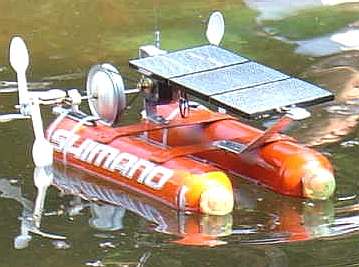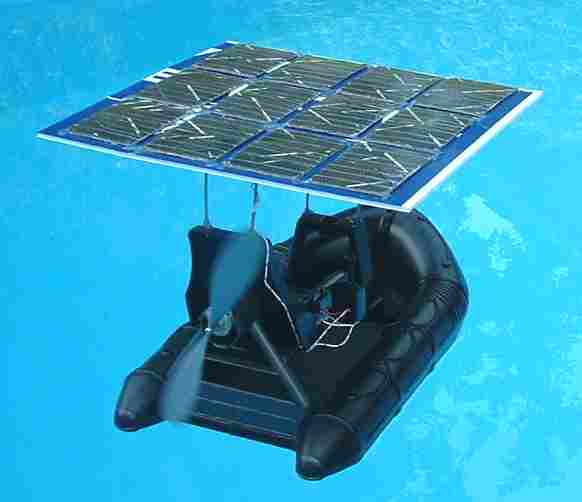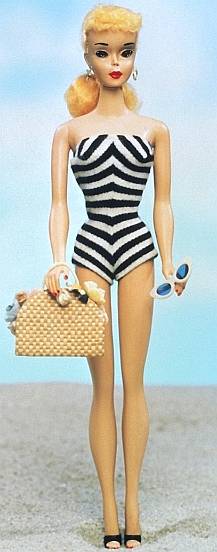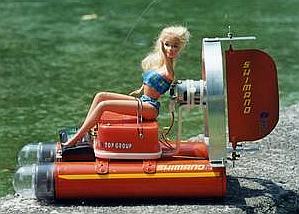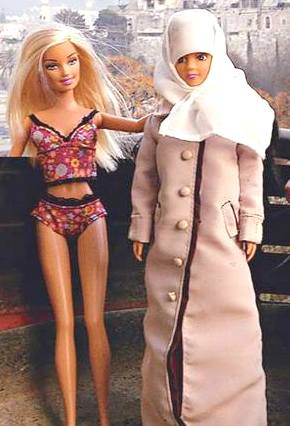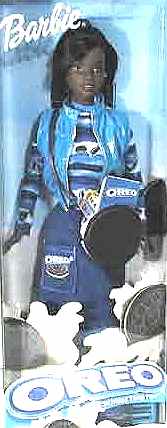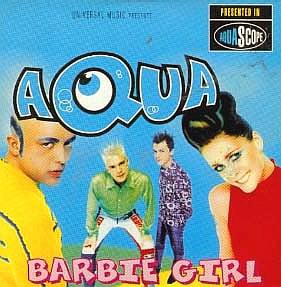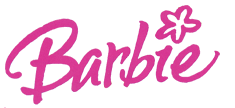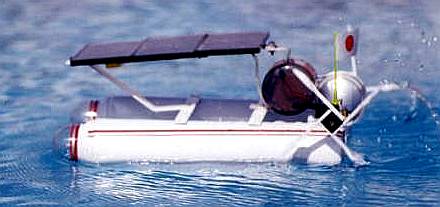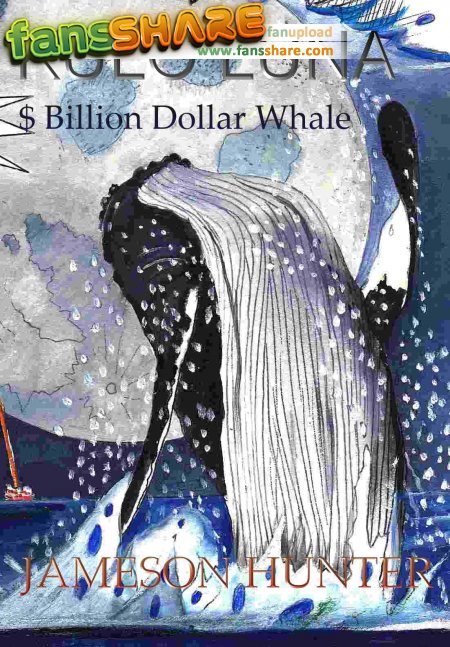|
MODELISMO NAVAL DE RECICLADO MEXICANO
|
|
|
A group of students from Mexico have built several solar powered and electric twin hulled boats made from empty soda and aerosol cans.
Jose Villarreal Torres says: "
"GREETING FROM MEXICO."
"Solar boat 2, constructed with soda water bottles, has greater stability. He is very original and creative, but, the arrow with propela, is very long, I consider to construct a short axis but and to lower to the motor at the level of the water, encapsulating the motor with wax, in a receiver of photographic film."
"I send photo of a model impelled with solar energy, that she has good results, good stability, and good speed. 10 meters in 45 SECONDS. Using 3 photovoltaic cells of 1 volt, 250 miliamperes."
You can see the pictures below and this may give you ideas for making your own solar powered models, which we'd like to see. NK
Descripción
Llevar
el timón a control remoto de una embarcación pequeña,
ARS LONGA VITA BREVIS - MODELISMO NAVAL DE RECICLADO
http://mx.groups.yahoo.com/group/ppnautica
PPSAILOR Y LAS LIBÉLULAS
This is a converted Action Man inflatable model
Other projects:
Action Man Blackcurrant Boat1, Blackcurrant Boat 2, Princess Park
Barbie is a best-selling fashion doll launched in 1959. The doll is produced by Mattel, Inc., and is a major source of revenue for the company. The American businesswoman Ruth Handler (1916-2002) is regarded as the creator of Barbie, and the doll's design was based on another doll that she had found during a trip to Germany.
Barbie has been an important part of the toy fashion doll market for nearly fifty years, and has been the subject of numerous controversies and lawsuits, often involving parody of the doll and her lifestyle. In recent years, Barbie has faced increasing competition from the Bratz range of dolls.
The original Barbie doll was launched in March 1959
History
Ruth Handler watched her daughter Barbara at play with paper dolls, and noticed that she often enjoyed giving them adult roles. At the time, most children's toy dolls were representations of infants. Realizing that there could be a gap in the market, Handler suggested the idea of an adult-bodied doll to her husband Elliot, a co-founder of the Mattel toy company. He was unenthusiastic about the idea, as were Mattel's directors.
During a trip to Germany in 1956 with her children Barbara and Kenneth, Ruth Handler discovered a German doll called Bild Lilli in a shop window. The adult-figured Lilli doll was exactly what Handler had in mind, so she purchased three of them. She gave one to her daughter and took the others back to Mattel. The Lilli doll was based on a popular character appearing in a comic strip drawn by Reinhard Beuthin for the newspaper Die Bild-Zeitung. Lilli was a working girl who knew what she wanted and was not above using men to get it. The Lilli doll was first sold in Germany in 1955, and although it was initially sold to adults, it became popular with children who enjoyed dressing her up in outfits that were available separately.
Upon her return to the United States, Handler reworked the design of the doll (with help from engineer Jack Ryan) and the doll was given a new name, Barbie, after Handler's daughter Barbara. The doll made its debut at the American International Toy Fair in New York on March 9, 1959. This date is also used as Barbie's official birthday. Mattel acquired the rights to the Bild Lilli doll in 1964 and production of Lilli was stopped. The first Barbie doll wore a black and white zebra striped swimsuit and signature topknot ponytail, and was available as either a blonde or brunette. The doll was marketed as a "Teen-age Fashion Model," with her clothes created by Mattel fashion designer Charlotte Johnson. Around 350,000 Barbie dolls were sold during the first year of production.
Ruth Handler believed that it was important for Barbie to have an adult appearance, and early market research showed that some parents were unhappy about the doll's chest, which had distinct breasts. Barbie's appearance has been changed many times, most notably in 1971 when the doll's eyes were adjusted to look forwards rather than having the demure sideways glance of the original model.
Barbie was one of the first toys to have a marketing strategy based extensively on television advertising, which has been copied widely by other toys. It is estimated that over a billion Barbie dolls have been sold worldwide in over 150 countries, with Mattel claiming that three Barbie dolls are sold every second.
The standard range of Barbie dolls and related accessories are manufactured to approximately 1/6th scale, which is also known as playscale. Barbie products include not only the range of dolls with their clothes and accessories, but also a huge range of Barbie branded goods such as books, fashion items and video games. Barbie has appeared in a series of animated films and makes a brief guest appearance in the 1999 film Toy Story 2.
Almost uniquely for a toy fashion doll, Barbie has become a cultural icon and has been given honors that are rare in the toy world. In 1974 a section of Times Square in New York City was renamed Barbie Boulevard for a week, while in 1985 the artist Andy Warhol created a painting of Barbie.
A Barbie Doll riding a radio controlled model boat made from aerosol cans in Mexico - nice one!
Biography
Barbie's full name is Barbara Millicent Roberts. According to the Random House novels of the 1960s, her parents' names are George and Margaret Roberts of Willows, Wisconsin. Barbie has been said to attend Willows High School in Willows, Wisconsin and Manhattan International High School in New York City, (based on the real-life Stuyvesant High School). She has an on-off romantic relationship with her beau Ken (Ken Carson), who first appeared in 1961. Like Barbie, Ken shares his name with one of Ruth Handler's children. A news release from Mattel in February 2004 announced that Barbie and Ken had decided to split up, but in February 2006 they were back together again.
Barbie has had over forty pets including cats and dogs, horses, a panda, a lion cub, and a zebra. She has owned a wide range of vehicles, including pink convertibles, trailers and jeeps. She also holds a pilot's license, and operates commercial airliners in addition to serving as a flight attendant. Barbie's careers are designed to show that women can take on a variety of roles in life, and the doll has been sold with a wide range of titles including Miss Astronaut Barbie (1965), Doctor Barbie (1988) and Nascar Barbie (1998).
Mattel has created a range of companions for Barbie, including Hispanic Teresa, African American Christie and Steven (Christie's boyfriend). For more details, see the List of Barbie's friends and family.
Barbie facing comparison with the Middle Eastern Fulla doll
Controversies
Barbie's popularity ensures that her effect on the play of Western children attracts a high degree of scrutiny. The criticisms leveled at her are often based on the assumption that children consider Barbie a role model and will attempt to emulate her.
Oreo Fun Barbie from 1997 became controversial due to a negative interpretation of the doll's name
The 1997 song Barbie Girl by Aqua led to a five year lawsuit
Parodies and lawsuits
Barbie has often been referenced in popular culture and is frequently the target of parody. Some of these occasions include:
Collecting
Mattel estimates that there are well over 100,000 avid Barbie collectors. Ninety percent are women, at an average age of 40, purchasing more than twenty Barbie dolls each year. Forty-five percent of them spend upwards of $1000 a year.
Vintage Barbie dolls from the early years are the most valuable at auction, and while the original Barbie was sold for $3.00 in 1959, a mint boxed Barbie from 1959 sold for $3552.50 on eBay in October 2004. On September 26, 2006, a Barbie doll set a world record at auction of 9,000 pounds sterling (US $17,000) at Christie's in London. The doll was a Barbie in Midnight Red from 1965 and was part of a private collection of 4,000 Barbie dolls being sold by two Dutch women, Ietje Raebel and her daughter Marina.
In recent years Mattel has sold a wide range of Barbie dolls aimed specifically at collectors, including porcelain versions and depictions of Barbie as a range of characters from television series such as The Munsters and Star Trek. There are also collector's edition dolls depicting Barbie dolls with a range of different ethnic identities. In 2004 Mattel introduced the Color Tier system for its collector's edition Barbie dolls, ranging through pink, silver, gold and platinum depending on how many of the dolls are produced.
My Scene Barbie dolls are the subject of a lawsuit from the creators of Bratz dolls
Barbie versus Bratz
In June 2001 MGA Entertainment launched the Bratz range of dolls, a move that would give Barbie her first serious competition in the fashion doll market. In 2004 sales figures showed that Bratz dolls were outselling Barbie dolls in the United Kingdom, although Mattel maintained that in terms of the number of dolls, clothes and accessories sold, Barbie remained the leading brand. In 2005 figures showed that sales of Barbie dolls had fallen by 30% in the United States, and by 18% worldwide, with much of the drop being attributed to the popularity of Bratz dolls.
In April 2005, MGA Entertainment filed a lawsuit against Mattel, claiming that the My Scene range of Barbie dolls had copied the doe-eyed look of Bratz dolls. The lawsuit is currently pending in the court system of California.
Mattel is also suing MGA Entertainment and Carter Bryant, a former doll designer for Mattel, claiming that company secrets were stolen by MGA.
Further reading
LINKS and REFERENCE
MORE ON AGENDA 21 MEMBERS OF PARLIAMENT A-Z HOUSE OF LORDS A-Z COUNCIL'S AGENDA 21
A heartwarming adventure: Pirate whalers V Conservationists, with an environmental message. For release as an e-book in 2013 with hopes for a film in 2015 TBA (graphic design: Martin House)
|
|
|
This website is Copyright © 1999 & 2012 Max Energy Limited an educational charity working hard for world peace. The bird logos and names Solar Navigator, Blueplanet Ecostar and Utopia Tristar are trademarks. All rights reserved. All other trademarks are hereby acknowledged. |
|
|
AUTOMOTIVE | BLUEPLANET BE3 | ELECTRIC CARS | ELECTRIC CYCLES | SOLAR CARS | SOLARNAVIGATOR | UTOPIA |
